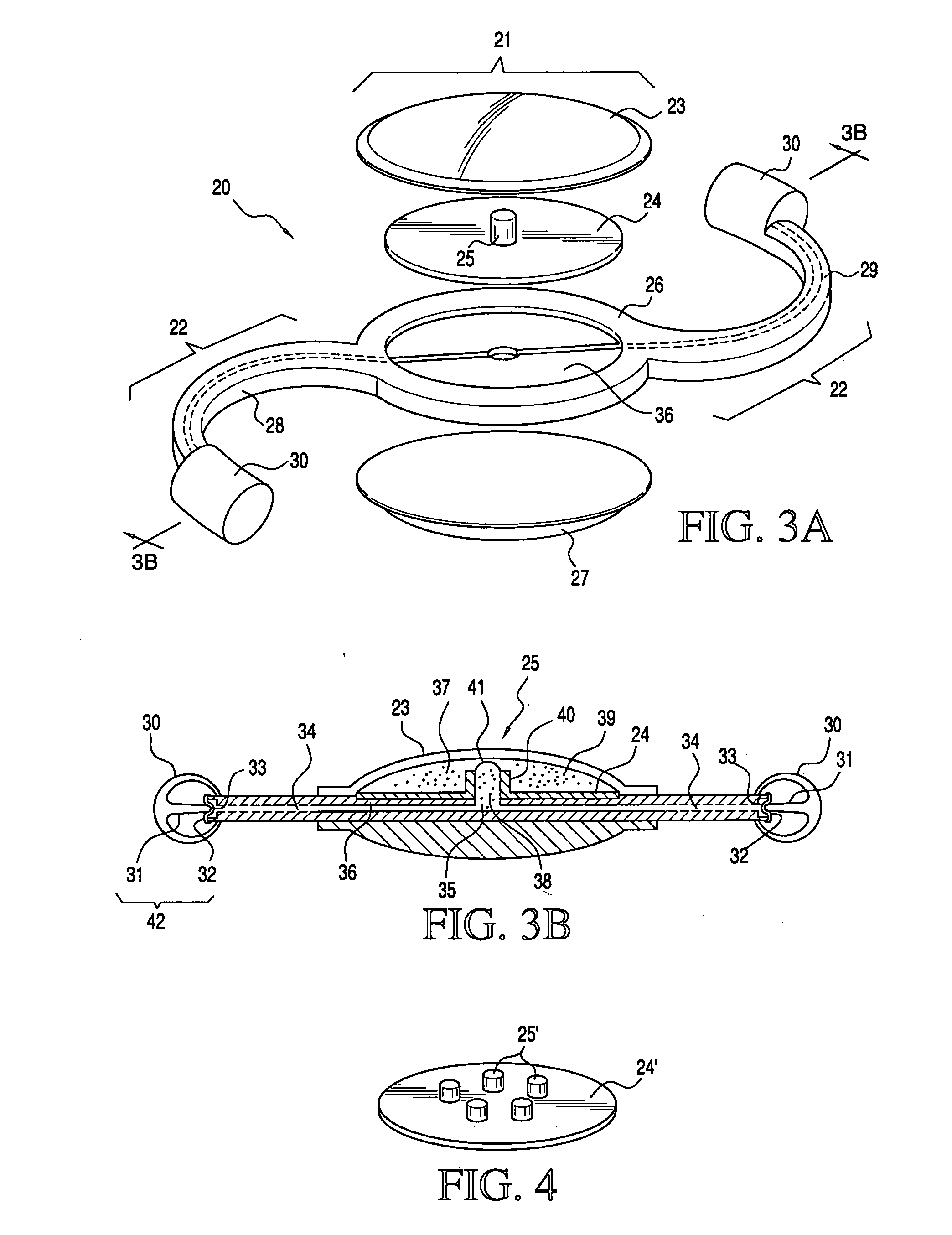Accommodating intraocular lens system utilizing direct force transfer from zonules and method of use
a technology of intraocular lens and zonule, which is applied in the field of intraocular lens, can solve the problems of preventing widespread commercialization of such devices, unable to be accommodated, and typically already lost ability, and achieves volumetric mechanical advantage in deflecting an optical surface, effective manipulation, and modifying optical parameters
- Summary
- Abstract
- Description
- Claims
- Application Information
AI Technical Summary
Benefits of technology
Problems solved by technology
Method used
Image
Examples
Embodiment Construction
[0041] In accordance with the principles of the present invention, an intraocular lens is provided having a haptic portion and a light-transmissive optic portion. The optic portion contains one or more fluid-mediated pistons arranged to apply a deflecting force on an anterior or posterior element of the lens to provide accommodation of the lens. As used herein, the lens is fully “accommodated” when it assumes its most highly convex shape, and fully “unaccommodated” when it assumes its most flattened, least convex state. The lens of the present invention is capable of dynamically assuming any desired degree of accommodation between the fully accommodated state and fully unaccommodated state responsive to the movement of the ciliary muscles and deformation of the capsule.
[0042] Forces imposed on the haptic portion are applied to a transducer and communicated to one or more lens pistons that control deflection of an anterior or posterior element of the lens, resulting in a larger dyna...
PUM
 Login to View More
Login to View More Abstract
Description
Claims
Application Information
 Login to View More
Login to View More - R&D
- Intellectual Property
- Life Sciences
- Materials
- Tech Scout
- Unparalleled Data Quality
- Higher Quality Content
- 60% Fewer Hallucinations
Browse by: Latest US Patents, China's latest patents, Technical Efficacy Thesaurus, Application Domain, Technology Topic, Popular Technical Reports.
© 2025 PatSnap. All rights reserved.Legal|Privacy policy|Modern Slavery Act Transparency Statement|Sitemap|About US| Contact US: help@patsnap.com



